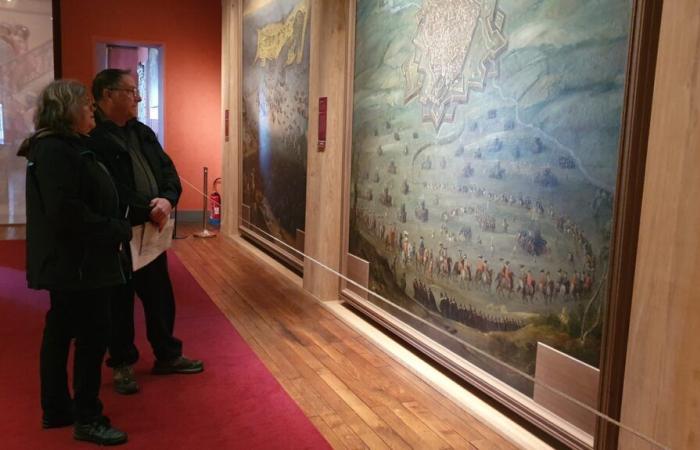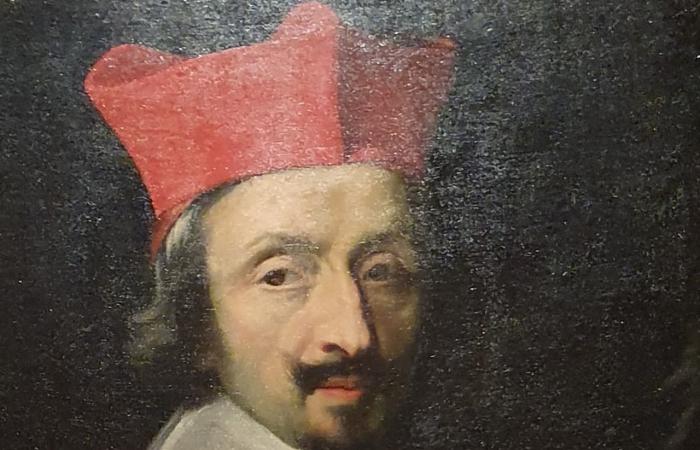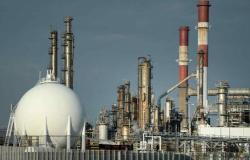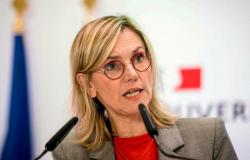At first glance, the fleeting vision of a vast gallery with subdued lights. Looking closer, a reconstruction! On the first floor of the Richelieu town hall, in the eponymous museum, six immense canvases face each other, in a dialogue glorifying the monarchy, Richelieu (1585-1642) and its king, Louis XIII (1601-1643).
At the end of this guard of honor of paintings, a trompe-l'oeil, that of the sumptuous gallery of the cardinal's missing castle. “It was seventy meters long by ten meters wide and had impressed Louis XIV,” specifies Marie-Pierre Terrien*, historian specializing in Richelieu. Even inspiring the architecture and pageantry of Versailles.
In the background, a trompe-l'oeil representing the great gallery of the Château de Richelieu.
© (Photo NR, Flore Mabilleau)
A set of around twenty paintings
These six paintings, restored in 2011, were part of a set of twenty paintings, of which only twelve have survived the ravages of time. “They illustrate Richelieu’s policy,” continues Marie-Pierre Terrien. A program that boils down to three axes: “the fight against the Protestant party, against the Habsburgs and against the pride of the great”. Visitors discover the arrival of the English on the Île de Ré to bring aid to the Protestants of La Rochelle, the famous siege of the rebellious city, a reduction of Montauban, of Nîmes with its arenas, or the battle of Avins, 40 km from Liège, in 1635. « The paintings are extremely precise, realistic, and border on cartographic work. »
Authors and a mysterious journey
But they still remain very mysterious. No one knows exactly who painted them. “Several artists worked at the Château de Richelieu and the paintings are not signed”specifies the historian. How were they saved? Here again, it is difficult to trace their exact history. They were in any case found in the reserves of the Palace of Versailles, undoubtedly recovered and protected for a long time by a wise heritage curator.
Just like many sculptures. Because the Cardinal, real name Armand Jean du Plessis de Richelieu, a lover of art before the eternal, had ordered nearly two hundred and fifty antique statues in Italy, constituting one of the greatest collections of his time! “His castle was a real museum”confirms Marie-Pierre Terrien. The town hall of the town today houses a tiny part of these remains scattered in France and around the world, as far as Washington. Testimonies of this fallen magnificence.
Richelieu Museum inaugurated in 1961 at Richelieu town hall, 1, place du Marché. From September 23 to December 30 (except December 25), open from 10 a.m. to 12 p.m. and from 2 to 5 p.m. except Tuesdays, Saturdays and Sundays. Prices: €3, free for children under 12. Information at 02.47.58.10.13
Richelieu, seen from the sky, in 2008.
© (Photo archives NR, Gérard Proust)
The Cardinal's ideal city
Here, there are no crooked alleyways or narrow streets. South of Chinon (Indre-et-Loire), welcome to Richelieu, an astonishing heritage commune of nearly 1,600 inhabitants, surrounded by ramparts and moats. The small town seems set in the middle of the countryside, organized into perpendicular and parallel streets, drawn with a line. A checkerboard plan inspired by Roman cities. “The whole thing is governed by very precise mathematical rules, it’s not a place where you get lost,” smiles Marie-Pierre Terrien, local historian, specialist in these stones. Richelieu, named after the famous cardinal, was developed from 1631 as an “ideal city”, imagined by the architect Jacques Lemercier. All, to the glory of the minister, who thus enlarged the family property, creating a sumptuous castle of gold and marble, with the authorization of his king Louis XIII, who thanked him for his services.
A castle and a town in his name, a megalomaniac delusion? “It was in the spirit of that time,” assures Marie-Pierre Terrien. When the clergyman died, the titanic project, where nearly 2,000 workers would have been mobilized, was almost complete. Alas, Richelieu never lived in these places. And if the town is still standing, the castle has almost disappeared since 1805.
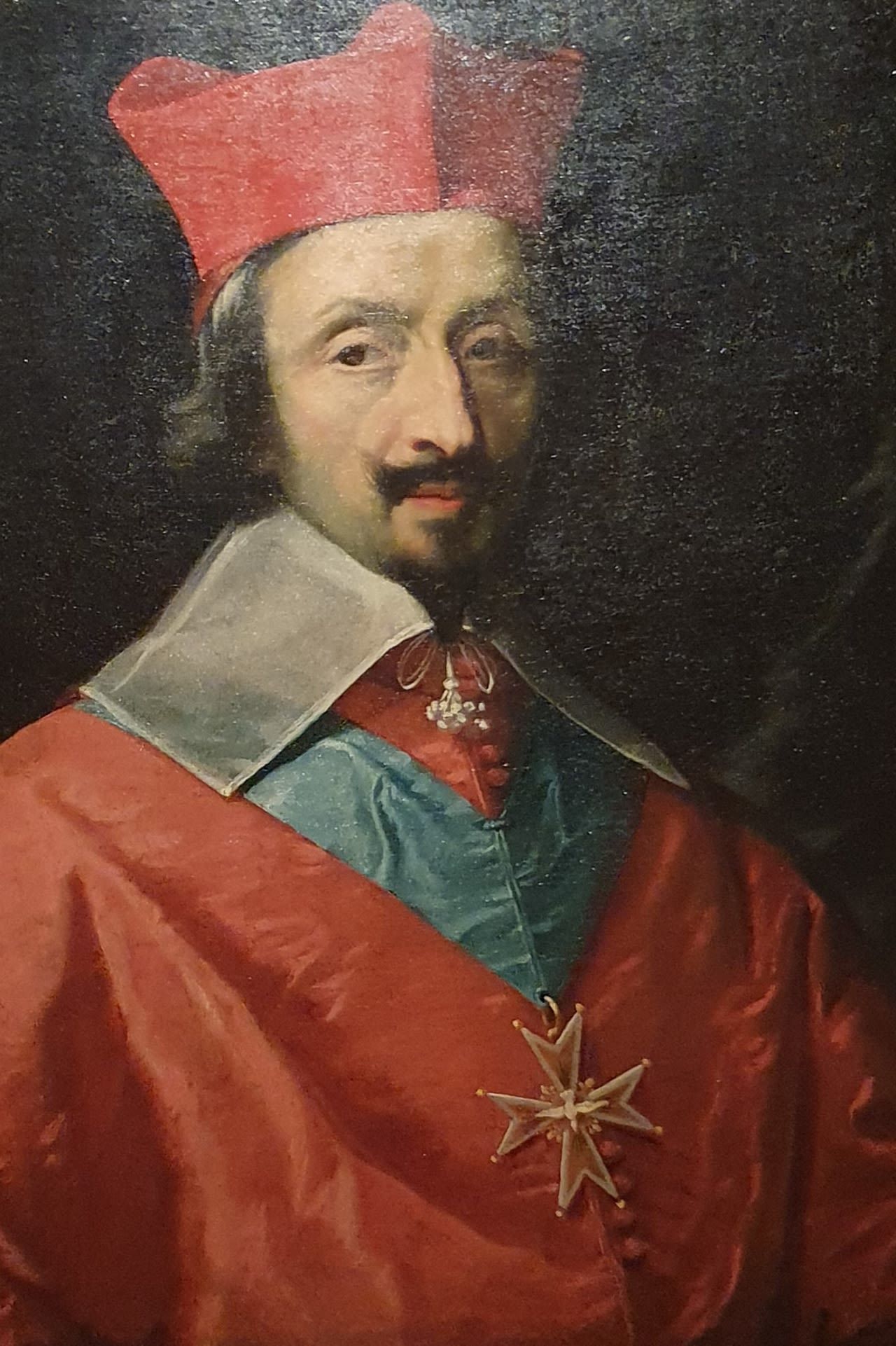
One of Richelieu's portraits, hung in the eponymous museum.
© (Photo NR, Flore Mabilleau)
350
It has been three hundred and fifty years since the most famous portrait painter of the cardinal died. Philippe de Champaigne (1602-1674) painted more than twenty portraits of Richelieu, then copied by countless artists. The Richelieu Museum is also showing a sample of these paintings during its exhibition “The portraits of Richelieu, a propaganda tool”.

